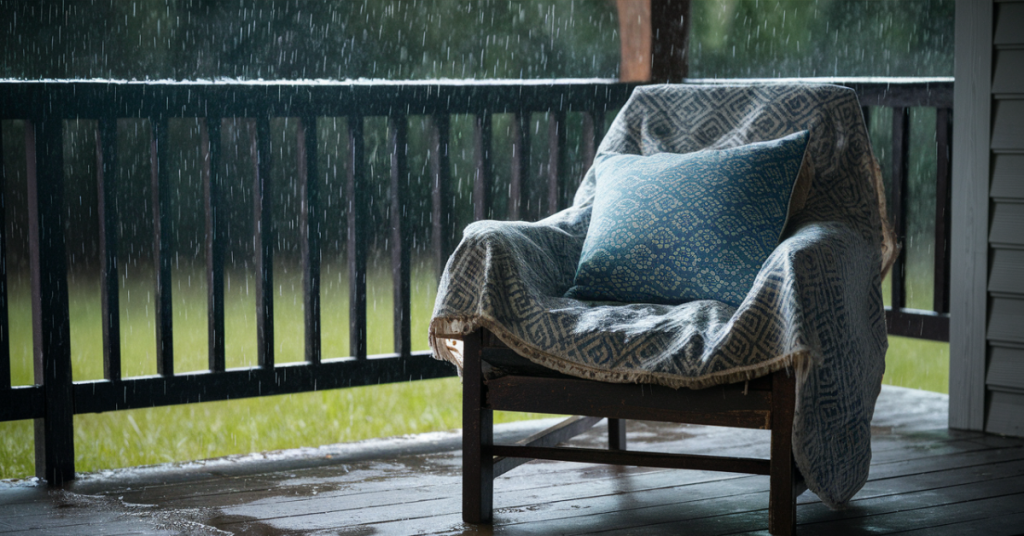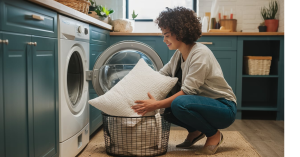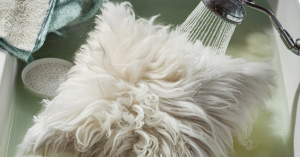
Can Outdoor Pillows Get Wet?
Learn if outdoor pillows can get wet and how to care for them to ensure they last through all seasons.
Imagine this: you’re lounging on your patio, basking in the sun, and enjoying the fresh air. Your outdoor pillows are fluffed just right, adding a touch of comfort and color to your outdoor space. But then, dark clouds roll in, and it starts to rain. You rush inside, leaving your beloved pillows out in the elements. What happens next? Do these pillows survive the drenching? Let’s dive into the world of outdoor pillows and find out how they fare against moisture.
Table of Contents
ToggleOutdoor Pillows
Outdoor pillows are specifically designed to withstand the elements, including rain, humidity, and sunlight. They are different from indoor pillows in several key ways:
Material: Outdoor pillows are made from durable, weather-resistant fabrics like polyester, acrylic, or olefin. These materials are less likely to absorb water and dry out more quickly.
Filling: The filling inside outdoor pillows is often made of quick-drying foam or polyester fiberfill, which resists mold and mildew.
Construction: Outdoor pillows often have a tighter weave and are sometimes treated with water-repellent coatings to add an extra layer of protection
What Happens When Outdoor Pillows Get Wet?
When outdoor pillows get wet, their water-resistant materials and quick-drying fillings come into play. Here’s a breakdown of what typically happens:
Rainwater: Most outdoor pillows can handle a bit of rain without any issues. Their water-resistant fabric will repel some of the moisture, while the rest will seep through but won’t cause immediate damage.
Drying: Thanks to their quick-drying materials, outdoor pillows usually dry out relatively fast after a rain shower. Placing them in a sunny spot can speed up this process.
Mold and Mildew: If outdoor pillows remain wet for too long, there’s a risk of mold and mildew developing. This is why it’s important to allow them to dry thoroughly between uses.
Tips for Caring for Wet Outdoor Pillows
To extend the life of your outdoor pillows and keep them in good condition, follow these simple care tips:
- Shake Off Excess Water: After a rain shower, shake your pillows to remove as much water as possible. This helps them dry faster.
- Dry in Sunlight: Place your wet pillows in direct sunlight to speed up the drying process. Sunlight also helps kill mold and mildew spores.
- Use Pillow Covers: Consider using removable pillow covers that are easy to take off and wash. This way, you can clean them separately and ensure the pillows dry thoroughly.
- Store During Bad Weather: If you know a heavy rainstorm or prolonged wet weather is coming, bring your pillows indoors or store them in a dry place.
- Clean Regularly: Regular cleaning prevents dirt and grime from embedding into the fabric, which can compromise the pillow’s water-resistant properties.
Common Myths About Outdoor Pillows
Let’s clear up some common misconceptions about outdoor pillows and moisture:
- Myth: Outdoor pillows are completely waterproof.
- Reality: While outdoor pillows are water-resistant, they are not completely waterproof. They can handle some moisture but should not be submerged or left in standing water for extended periods.
- Myth: Outdoor pillows never need cleaning.
- Reality: Outdoor pillows can get dirty and should be cleaned regularly to maintain their appearance and functionality.
- Myth: Outdoor pillows can stay outside all year round.
- Reality: Although they are durable, prolonged exposure to extreme weather conditions can wear down outdoor pillows. It’s best to store them during harsh weather to extend their lifespan.
Choosing the Best Outdoor Pillows
When selecting outdoor pillows, consider the following factors to ensure they can handle getting wet:
- Material Quality: Look for pillows made from high-quality, weather-resistant materials like solution-dyed acrylic or polyester.
- Filling: Opt for pillows with quick-drying foam or polyester fiberfill to prevent mold and mildew.
- Water-Repellent Coating: Some pillows come with an additional water-repellent coating for extra protection.
- Removable Covers: Pillows with removable covers are easier to clean and dry.
- Brand Reputation: Choose reputable brands known for their durable and high-quality outdoor products.
Fun Facts About Outdoor Pillows
- Variety: Outdoor pillows come in a wide range of colors, patterns, and shapes, allowing you to customize your outdoor space to match your style.
- Multi-Use: These pillows aren’t just for patios and decks. You can use them on boats, in camping setups, or even indoors for a splash of outdoor charm.
Eco-Friendly Options: Many outdoor pillows are now made from recycled materials, making them a sustainable choice for your home.
Final Words
Outdoor pillows are designed to handle the elements, including getting wet. With their water-resistant materials and quick-drying fillings, they can endure rain and humidity better than indoor pillows. However, proper care and maintenance are key to ensuring they stay in good condition and last longer. By following simple tips like drying them in sunlight and storing them during bad weather, you can enjoy your outdoor pillows for years to come.
So next time you see those dark clouds rolling in, you can rest easy knowing your outdoor pillows are up to the task. Just remember to give them a little extra care, and they’ll continue to provide comfort and style to your outdoor oasis.
Frequently Asked Questions
Outdoor pillows can usually handle some rain, but it’s better to bring them inside during heavy downpours to prolong their lifespan.
It’s okay if outdoor cushions get wet, as they are made to withstand moisture, but letting them dry thoroughly afterward is important to prevent mold and mildew.



